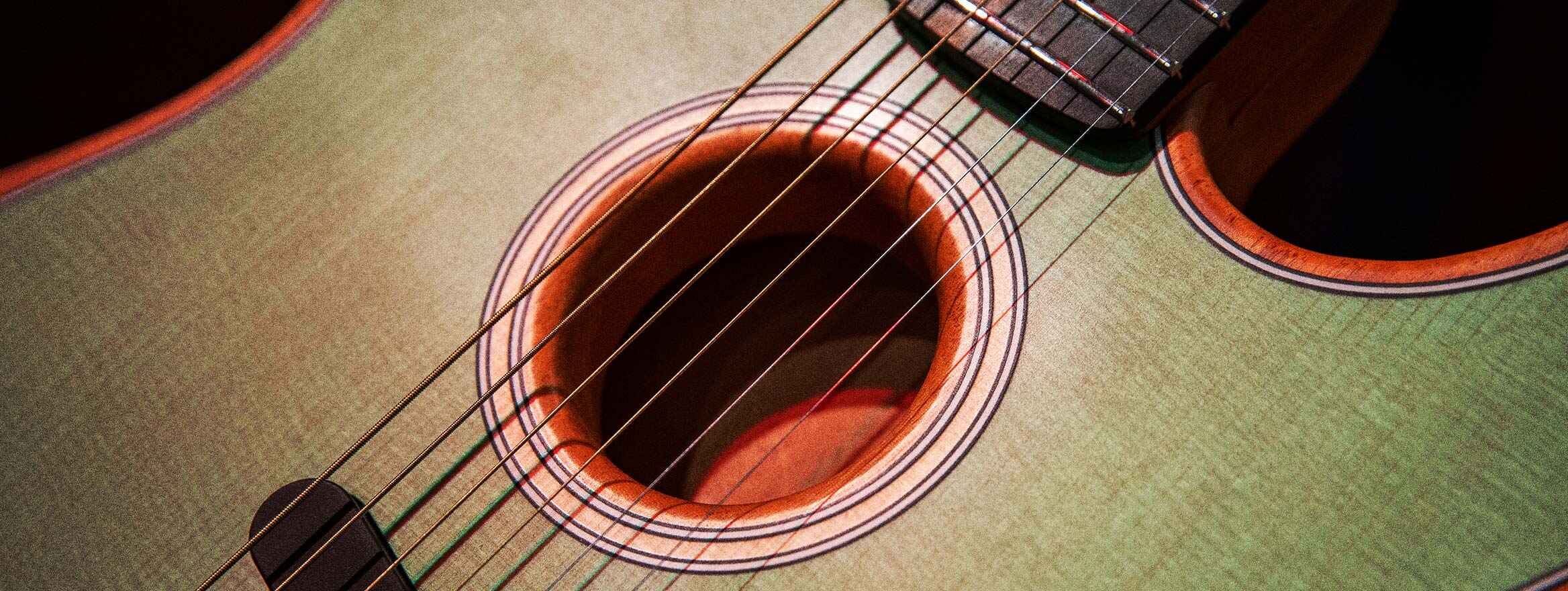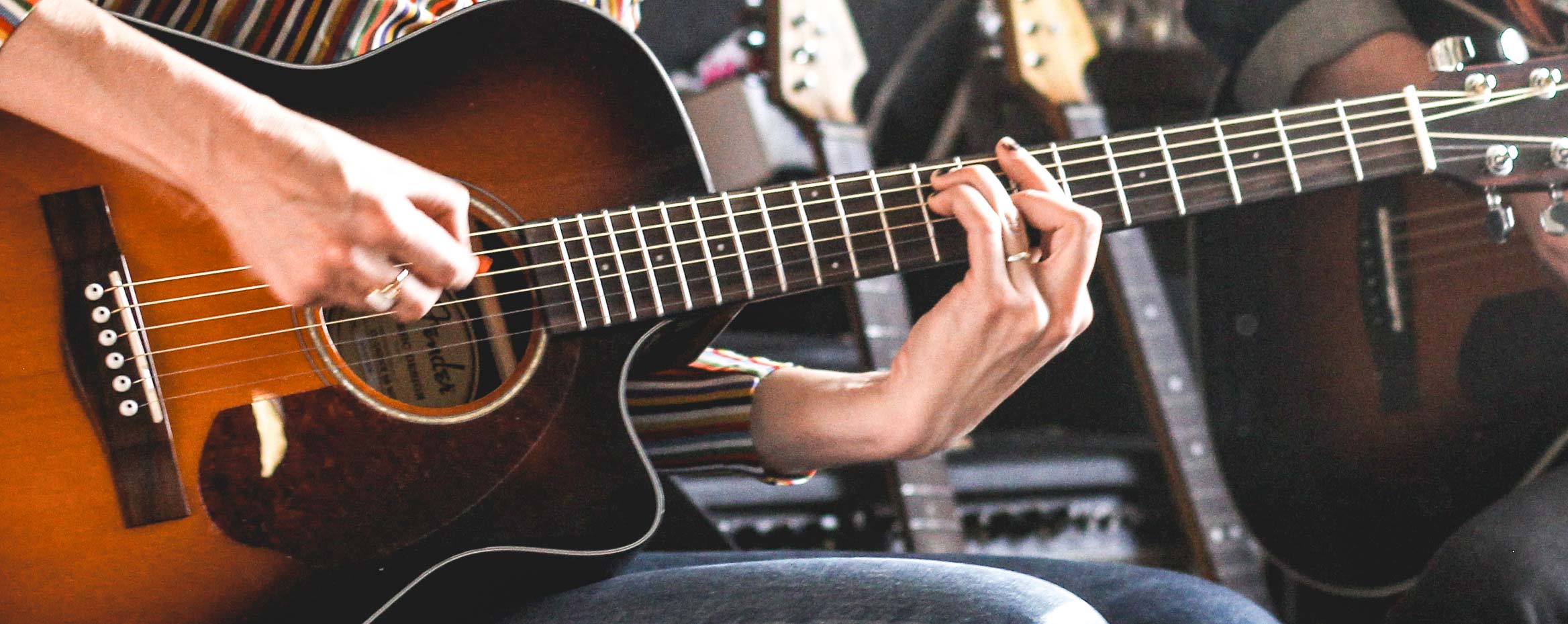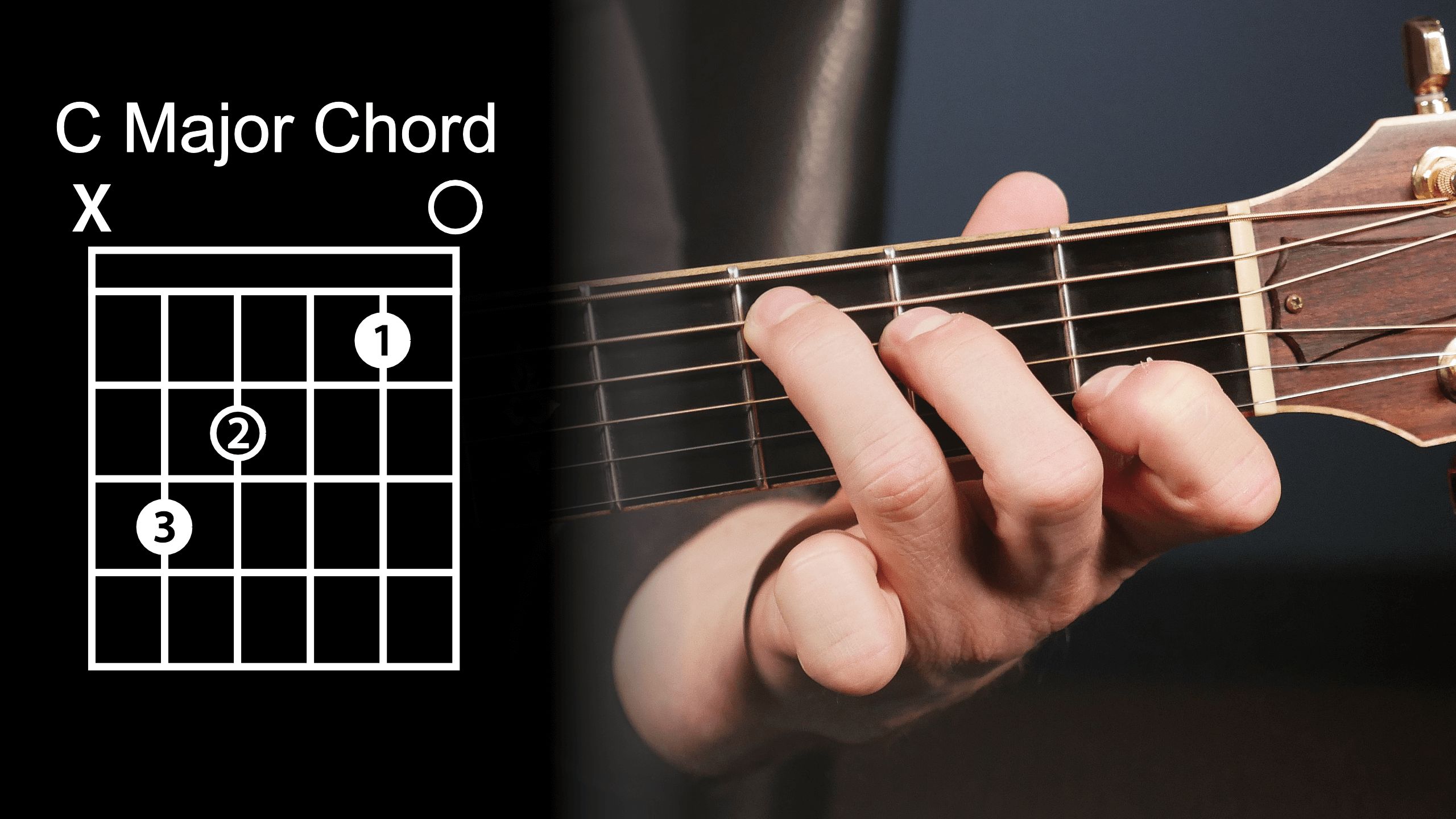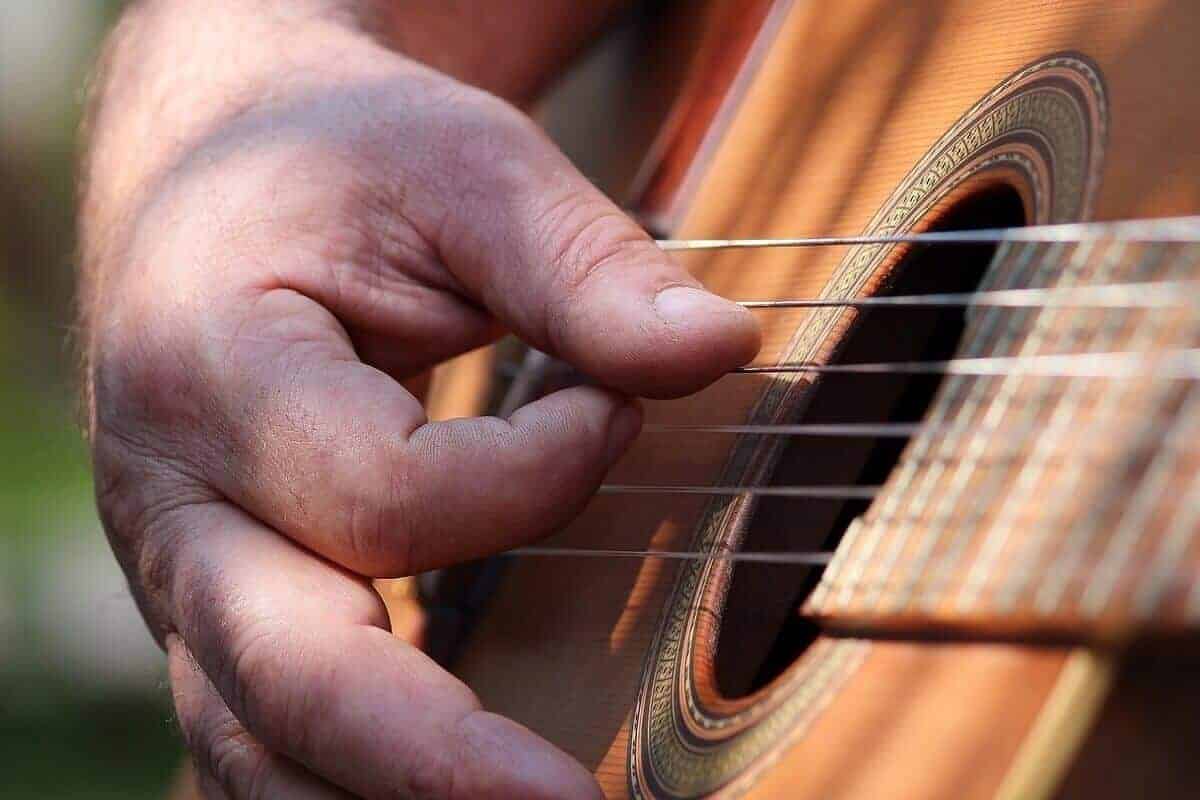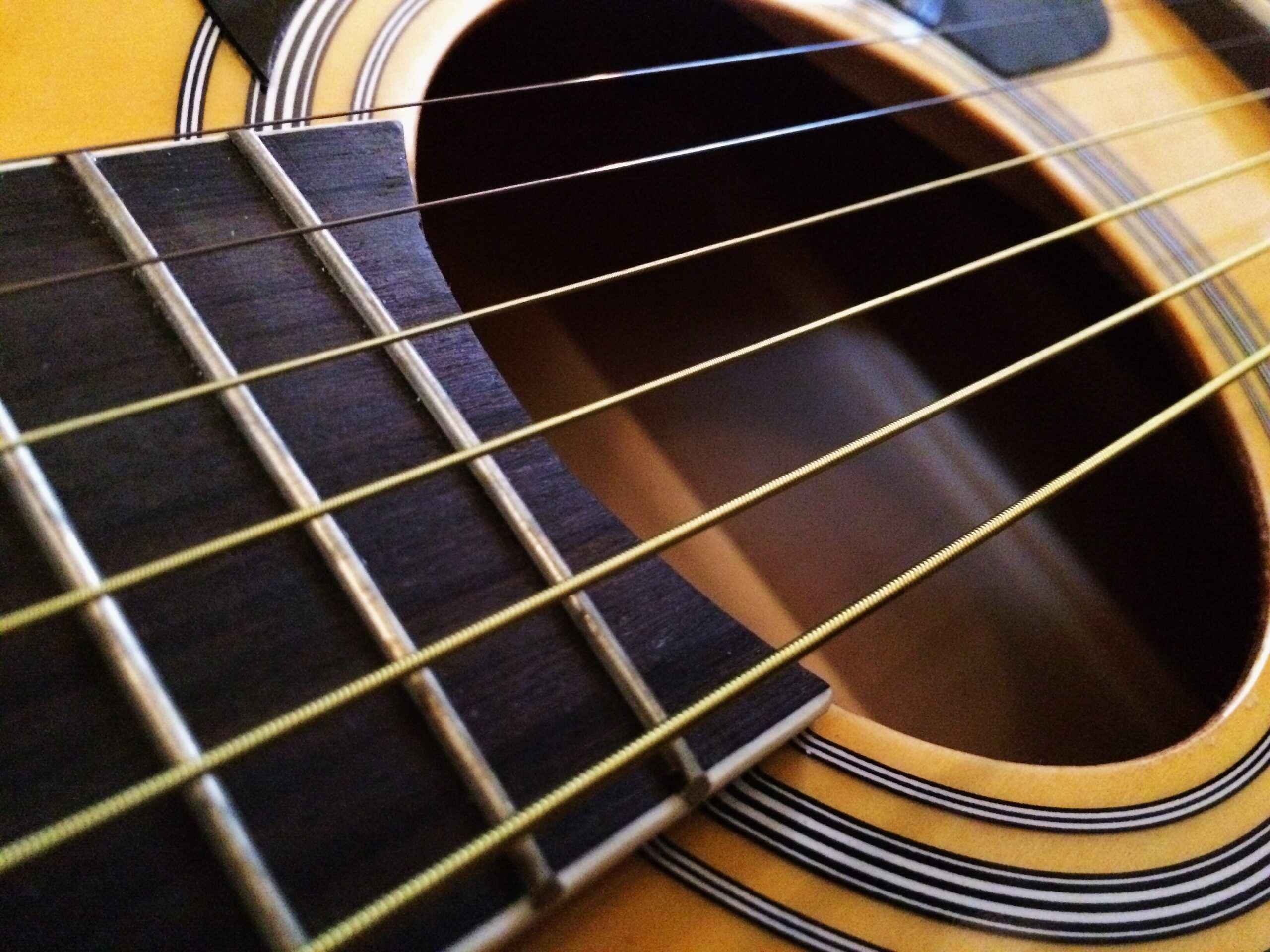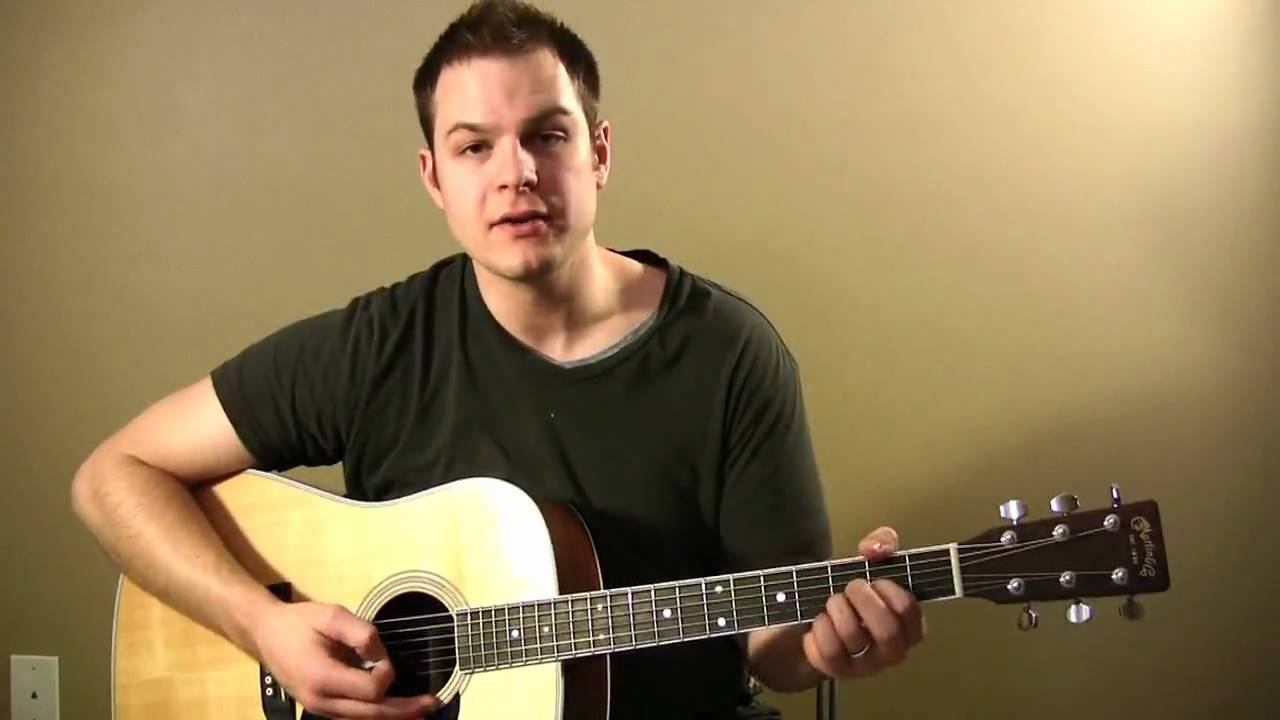Introduction
Playing the acoustic guitar is a popular and fulfilling musical pursuit. Whether you are a complete beginner or have some experience, learning how to play guitar chords is essential to unlocking a vast array of songs and creating your own melodies. Chords are the building blocks of music, allowing you to strum and create beautiful sounds on the guitar.
In this article, we will explore the world of guitar chords, starting with the basics and progressing to more advanced variations. We will cover open chords, barre chords, power chords, major and minor chords, seventh chords, and suspended chords. Additionally, we will provide tips on how to play chords correctly, including finger placement and strumming patterns.
Guitar chords are combinations of notes played simultaneously to create harmony. Each chord has a specific pattern of finger placements on the guitar fretboard. Open chords are a great starting point for beginners as they use a few open strings along with fretted notes. Barre chords, on the other hand, involve using one finger to press down multiple strings on the same fret, allowing for versatility and transposition of chords.
Power chords are often used in rock music to create a heavy and aggressive sound. Major and minor chords are the foundation of many popular songs, expressing a wide range of emotions. Seventh chords add complexity and tension, while suspended chords provide a unique and airy quality to your playing.
To play guitar chords effectively, correct finger placement is crucial. By placing your fingers in the right positions, you can produce clear and resonant sounds. Strumming patterns, such as downstrokes, upstrokes, and combinations, help to add rhythm and dynamics to your playing. Practicing chord progressions and exercises will further enhance your skills, giving you the ability to play smoothly and effortlessly.
Whether you want to strum along to your favorite songs or write your own music, learning guitar chords is an exciting journey. So, grab your acoustic guitar, tune it up, and let’s dive into the world of chords and music!
What are guitar chords?
Guitar chords are combinations of multiple notes played simultaneously on the guitar. They provide harmony and structure to music, allowing you to create melodies and accompany songs. Think of chords as the foundation upon which songs are built.
In simple terms, a chord is formed by pressing multiple strings at specific frets on the guitar neck. Each chord has a unique finger placement pattern that determines the notes produced when strummed or plucked. These notes, when played together in harmony, create a rich and full sound that adds depth to your playing.
When you encounter chord symbols in sheet music or tabs, they are typically written using letters and numbers. The letters represent the names of the chords, such as A, C, G, D, etc., while the numbers indicate the specific finger positions on the fretboard. By learning and practicing these chord shapes and positions, you can quickly switch between chords and play a wide variety of songs.
Guitar chords can be categorized into different types based on their structure and sound. Common types include open chords, barre chords, power chords, major chords, minor chords, seventh chords, and suspended chords. Each type has its unique characteristics and uses in different musical genres.
Open chords are played using a combination of open strings (unfretted) and fretted notes. They are usually the first chords beginners learn, as they are relatively easy to play and commonly used in many popular songs. Open chords provide a bright and warm sound that suits various musical styles.
Barre chords, on the other hand, involve pressing down one finger across multiple strings on a specific fret. This technique allows for transposing chords and playing them in different keys. Barre chords can be a bit challenging for beginners, but mastering them opens up a world of possibilities for playing more complex and versatile chord progressions.
Power chords are simplified versions of chords that consist of only the root note and the fifth. They are commonly used in rock and metal genres to create a powerful and heavy sound. Power chords are easy to play and are often played with distortion effects for a more aggressive tone.
Major chords are bright and happy-sounding, while minor chords create a more melancholic or moody atmosphere. Seventh chords add richness and complexity to your playing, with their four-note structure. Suspended chords provide a unique and ethereal quality by replacing the third note of the chord with either the second or fourth note.
Understanding and learning guitar chords is essential for any aspiring guitarist. They form the backbone of music and offer endless possibilities for creativity and expression. By familiarizing yourself with different chord types and practicing their finger positions, you’ll soon be strumming along to your favorite songs and even creating your own music.
Basic Chords
When starting your journey into playing the guitar, it’s important to get a grasp of some fundamental chords. These basic chords serve as the building blocks for more complex chord progressions and songs. By learning and mastering these foundational chords, you’ll have a solid foundation to expand upon as you progress in your guitar playing.
Here are a few essential basic chords that every guitarist should start with:
- Chord 1: The C Major chord is one of the most widely used chords in music. It’s relatively simple to play and is a great starting point for beginners. To play the C Major chord, place your index finger on the first fret of the B string, your middle finger on the second fret of the D string, and your ring finger on the third fret of the A string. Strum from the A string down.
- Chord 2: The G Major chord is another common and versatile chord. To play the G Major chord, place your index finger on the second fret of the A string, your middle finger on the third fret of the low E string, and your ring finger on the third fret of the B string. Strum from the low E string down.
- Chord 3: The D Major chord is a great chord to add to your repertoire. To play the D Major chord, place your index finger on the second fret of the G string, your middle finger on the second fret of the high E string, and your ring finger on the third fret of the B string. Strum from the D string down.
- Chord 4: The E Minor chord is easy to play and is commonly used in many songs. To play the E Minor chord, simply place your index and middle fingers on the second fret of the A and D strings, respectively. Strum all the strings starting from the low E string.
- Chord 5: The A Major chord is another essential chord to learn. To play the A Major chord, place your index finger on the second fret of the D string, your middle finger on the second fret of the G string, and your ring finger on the second fret of the B string. Strum from the A string down.
These basic chords are a great starting point for any guitarist. Practice transitioning between these chords smoothly, focusing on clean and clear strumming. As you become more comfortable, try incorporating different strumming patterns and rhythm variations to add more complexity to your playing.
Remember, practice is key to mastering these basic chords. Start by practicing each chord individually, ensuring that each note rings out clearly. Gradually increase the speed and accuracy of your transitions between chords. Consistent practice and dedication will help you develop muscle memory and make chord changes more seamless and effortless.
Once you feel comfortable with these basic chords, you’ll open up a world of possibilities to play countless songs and expand your musical repertoire. So grab your guitar, start practicing these basic chords, and get ready to embark on an exciting musical journey!
Open Chords
Open chords are a fundamental component of guitar playing, and they form the backbone of many popular songs across various genres. These chords are called “open” because they incorporate open strings, which are strings that are strummed without pressing down any frets. Open chords are an excellent starting point for beginners as they are relatively easy to play and provide a bright and full-bodied sound.
Here are some common open chords that every guitarist should learn:
- C Major: The C Major chord is a staple in many songs. To play it, place your ring finger on the third fret of the A string, your middle finger on the second fret of the D string, and your index finger on the first fret of the B string. Strum from the A string downwards.
- G Major: The G Major chord is another essential open chord. To play it, place your index finger on the second fret of the A string, your middle finger on the third fret of the low E string, and your ring finger on the third fret of the high E string. Strum all the strings from the low E string downwards.
- D Major: The D Major chord adds a warm and rich sound to your playing. To play it, place your index finger on the second fret of the G string, your middle finger on the second fret of the high E string, and your ring finger on the third fret of the B string. Strum from the D string downwards.
- E Major: The E Major chord is commonly used in rock, pop, and folk music. To play it, place your index and middle fingers on the first fret of the G and A strings, respectively, and your ring finger on the second fret of the D string. Strum all the strings from the low E string downwards.
- A Major: The A Major chord is a versatile open chord. To play it, place your index, middle, and ring fingers on the second fret of the D, G, and B strings, respectively. Strum from the A string downwards.
When playing open chords, it’s crucial to focus on finger placement and ensure that each note rings out clearly. Practice transitioning smoothly between different open chords, as this will help you build coordination and muscle memory. A metronome or a slow tempo backing track can be helpful for practicing chord changes in rhythm.
As you become more comfortable with playing open chords, you can experiment with adding variations, such as sus2 or sus4 chords, to create different colors and textures in your playing. Additionally, learning different strumming patterns will allow you to add rhythm and dynamics to your chord progressions.
Remember, practice is key when it comes to mastering open chords. Sets aside regular practice sessions to work on your finger placement, chord transitions, and overall technique. With time and dedication, you’ll find yourself effortlessly strumming along to your favorite songs and building a solid foundation for further guitar exploration.
Barre Chords
Barre chords are an essential skill for any guitarist looking to expand their playing abilities and take their guitar playing to the next level. These versatile chords allow you to play the same chord shape in different positions on the neck, providing flexibility and the ability to play various chords in different keys.
A barre chord involves using one finger, typically the index finger, to press down multiple strings across a single fret. By doing this, you create a “bar” that acts as a movable nut, allowing you to change the pitch and key of the chord.
Here’s a breakdown of how to play a basic barre chord:
- Position your index finger across the entire width of the desired fret.
- Using your index finger, press down on all the strings at that fret.
- Place your other fingers in the appropriate positions to form the desired chord shape.
For example, let’s look at the E major shape barre chord. Start by placing your index finger across the entire first fret. Then, use your middle, ring, and pinky fingers to form the E major chord shape on the 4th, 3rd, and 2nd strings respectively, starting from the 2nd fret onward. Strum all the strings except the lowest E string, creating an E major chord that can be moved up and down the neck.
Barre chords can be challenging at first due to the finger strength and dexterity required to press down multiple strings simultaneously. However, with consistent practice and proper technique, they become easier to play and unlock a whole new world of chord progressions and song possibilities.
One tip to make barre chords easier is to ensure that you have a solid and firm grip on the neck of the guitar. This will help you apply even pressure and prevent any buzz or muted strings. Additionally, concentrate on keeping your finger straight and using the bony part of your finger to press down the strings, rather than relying solely on muscle strength.
As you become comfortable with the basic barre chord shapes, you can start exploring different variations and voicings. By moving the same shape up and down the neck, you can play different chords, such as major, minor, dominant 7th, and more. This versatility allows you to adapt to different musical styles and create unique chord progressions.
Practice transitioning smoothly between barre chords and other open chords, gradually increasing your speed and precision. Incorporate different strumming patterns and variations to add depth and rhythm to your playing.
Remember, mastering barre chords takes time and practice. Start with simple chord shapes and gradually work your way up to more complex variations. With perseverance, you’ll soon be fluently playing barre chords and expanding your guitar playing abilities.
Power Chords
Power chords are an essential component of rock and metal music, known for their raw and aggressive sound. They are simple to play and provide a powerful, distorted tone that adds intensity to your guitar playing. Power chords are often favored by guitarists looking to create heavy riffs and energetic chord progressions.
The structure of a power chord is relatively straightforward. It consists of two notes: the root note and the fifth. By omitting the third note, power chords have a neutral quality, making them neither major nor minor. This lack of major or minor tonality gives power chords their distinct sound.
To play a power chord, place your index finger on the desired root note of the chord on the low E string or the A string. Then, place your ring finger or pinky finger two frets higher on the same string. For example, if you want to play a power chord based on the note A, place your index finger on the fifth fret of the low E string and your ring finger on the seventh fret of the same string. Strum the two strings simultaneously to produce a powerful and punchy sound.
Power chords are movable shapes, which means you can slide the same shape up and down the neck to play power chords in different keys. This flexibility allows you to explore different chord progressions and create dynamic and heavy riffs.
One advantage of power chords is their simplicity and versatility. Since they do not contain the third note, power chords are neither major nor minor. This neutrality makes them compatible with both major and minor keys. You can use power chords as a foundation for creating your own riffs, hooks, and solos, or you can incorporate them into existing songs to add a heavier edge.
When playing power chords, it’s important to focus on precision and muting. Since power chords are often played with distortion or overdriven tones, unwanted string noise can become more noticeable. To minimize string noise, lightly rest your index finger across the other strings, muting them while you play the power chord.
Experiment with different rhythm patterns, palm muting, and dynamic variations to add texture and excitement to your power chord playing. By focusing on your picking technique and the pressure you apply to the strings, you can create a range of dynamics and control the intensity of your sound.
Power chords are a great tool to have in your guitar playing arsenal, particularly if you enjoy rock, metal, punk, or other heavy genres. They provide a simple yet powerful way to create intense and energetic music. Incorporate power chords into your playing, and unleash the full potential of your guitar’s sonic capabilities.
Major Chords
Major chords are the foundation of countless songs across various genres. They are bright, uplifting, and commonly used to convey a sense of happiness and positivity in music. Understanding and incorporating major chords into your guitar playing will greatly expand your ability to play popular songs and create your own melodies.
A major chord is made up of three notes: the root note, the major third, and the perfect fifth. The root note is the starting point of the chord and determines its name (e.g., C major, G major, etc.). The major third is a note that is two whole steps above the root, while the perfect fifth is seven half steps above the root.
To play a major chord, locate the root note on the guitar fretboard and form the major chord shape by placing your fingers on the appropriate strings and frets. For example, to play a C major chord, place your ring finger on the third fret of the A string, your middle finger on the second fret of the D string, and leave the G, B, and high E strings open. Strum from the A string down, and you’ll hear the bright and cheerful sound of a C major chord.
Learning and practicing different major chord shapes will allow you to play major chords in various positions on the guitar neck. This versatility enables you to explore different chord progressions, create more complex harmonies, and add richness to your playing.
Major chords are widely used in many musical genres, including pop, rock, country, jazz, and more. They form the backbone of countless songs, providing a solid and melodic foundation. By learning major chords, you’ll gain the ability to play popular songs and express yourself creatively through your guitar playing.
When playing major chords, it’s important to focus on proper finger placement and press down firmly on the strings to produce clear, ringing tones. Experiment with different strumming patterns, dynamics, and rhythmic variations to add depth and expressiveness to your major chord progressions.
Understanding major chords also opens up opportunities to explore related chord progressions, such as the I-IV-V progression commonly found in many songs. This progression involves playing chords based on the first, fourth, and fifth degrees of a major scale. For example, in the key of C, the I-IV-V progression would consist of C major, F major, and G major chords.
As you become more comfortable with major chords, consider adding variations, such as extended or suspended chords, into your playing to add color and interest to your music. Major chords are versatile and can be utilized in different ways to create unique musical expressions.
Practice major chords regularly to develop muscle memory and strengthen your fingers. Incorporate them into your daily practice routine and strive for consistent and accurate chord transitions. With time and dedication, major chords will become second nature, opening up a world of musical possibilities on the guitar.
Minor Chords
Minor chords evoke a sense of melancholy, introspection, and sadness in music. Understanding and incorporating minor chords into your guitar playing will allow you to convey a wide range of emotions and add depth to your musical compositions. Whether you’re playing blues, rock, pop, or any other genre, minor chords are essential to creating a rich and diverse musical landscape.
A minor chord is made up of three notes: the root note, the minor third, and the perfect fifth. The root note determines the name of the chord (e.g., A minor, E minor, etc.). The minor third is a note that is three half steps (or one and a half whole steps) above the root, while the perfect fifth is seven half steps (or three and a half whole steps) above the root.
To play a minor chord, locate the root note on the guitar neck and form the minor chord shape by placing your fingers on the appropriate strings and frets. For example, to play an A minor chord, place your index finger on the first fret of the B string, your middle finger on the second fret of the D string, and your ring finger on the second fret of the G string. Strum from the A string down, and you’ll experience the somber and reflective sound of an A minor chord.
Mastering different minor chord shapes in various positions on the guitar neck will enhance your ability to create captivating chord progressions and explore different tonalities. Minor chords are often used in combination with major chords to create contrast and evoke a range of emotions within a musical piece.
Minor chords are widely used in a variety of musical genres, from soulful ballads to hauntingly beautiful melodies. They offer a unique color and can be utilized to add complexity to your guitar playing. By incorporating minor chords into your repertoire, you’ll have a powerful tool to express yourself creatively and connect with listeners on a deeper emotional level.
When playing minor chords, pay attention to proper finger placement and apply enough pressure to produce clear and resonant tones. Experiment with different strumming patterns, dynamics, and rhythmic variations to bring out the full emotional impact of minor chords.
Understanding minor chords also allows you to explore related chord progressions, such as the minor ii-V-i progression commonly found in jazz and other genres. This progression involves playing chords based on the second, fifth, and first degrees of a minor scale. For example, in the key of A minor, the ii-V-i progression would consist of B minor, E minor, and A minor chords.
As you become more proficient with minor chords, consider adding variations, such as seventh chords or suspended chords, into your repertoire to further diversify your musical palette. Experiment with different inversions and voicings to create unique and captivating chord progressions.
Practicing minor chords regularly will help you develop muscle memory and agility in your fretting hand. Incorporate them into your daily practice routine, focusing on smooth and accurate chord transitions. With time and dedication, minor chords will become natural to you, allowing you to create captivating music full of emotion and depth on the guitar.
Seventh Chords
Seventh chords add complexity and richness to your guitar playing. They are versatile chords that are commonly used in jazz, blues, funk, and various other genres. By incorporating seventh chords into your playing, you can create a more sophisticated and expressive musical experience.
A seventh chord is made up of four notes: the root note, the major or minor third, the perfect fifth, and the seventh. The seventh note determines the quality of the chord, whether it is a major seventh (Maj7), dominant seventh (7), minor seventh (m7), or half-diminished seventh (m7b5). These variations give seventh chords their characteristic sounds and qualities.
To play a seventh chord, locate the root note on the guitar neck and form the seventh chord shape by placing your fingers on the appropriate strings and frets. For example, to play a G7 chord, place your index finger on the first fret of the high E string, your middle finger on the second fret of the A string, your ring finger on the third fret of the low E string, and your pinky finger on the third fret of the B string. Strum from the low E string down to include all the strings.
Seventh chords can be used in various contexts, from adding tension and resolving in jazz progressions to creating a bluesy or soulful atmosphere in blues and funk music. They provide a distinct and vibrant flavor to your playing, allowing you to explore different harmonic possibilities.
When playing seventh chords, focus on achieving a clean and balanced sound by fretting each note properly. Strive for clarity and accuracy in your fingering technique to ensure that each note rings out clearly in the chord voicing.
Understanding and incorporating different types of seventh chords, such as major seventh (Maj7), dominant seventh (7), minor seventh (m7), and half-diminished seventh (m7b5), will expand your musical palette. Each type has its distinct sound and emotional quality, allowing you to create a wide range of moods and atmospheres in your playing.
Seventh chords are often used in chord progressions, allowing for interesting harmonic motion and adding depth to your compositions. Experiment with different chord progressions using seventh chords to create tension, release, and musical interest within your playing.
As with any new chord, practice is key to mastering seventh chords. Dedicate time to familiarize yourself with the various shapes and explore their applications in different musical contexts. Gradually increase the speed and precision of your chord changes, focusing on smooth transitions between seventh chords and other chord types.
By incorporating seventh chords into your guitar playing, you’ll be able to create more nuanced and sophisticated musical arrangements. Embrace the versatility and expressiveness of seventh chords, and let them elevate your playing to new heights.
Suspended Chords
Suspended chords, also known as sus chords, bring a unique and ethereal quality to your guitar playing. They offer an alternative to traditional major and minor chords, providing an interesting and colorful sound. Suspended chords are commonly used in various musical genres, including pop, rock, folk, and jazz.
A suspended chord is created by replacing the third note of a major or minor chord with either the second (sus2) or fourth (sus4) note. This substitution gives the chord a suspended and unresolved quality, adding tension and intrigue to your playing.
To play a suspended chord, start with a major or minor chord shape and adjust your finger placement accordingly. For example, to play a Dsus2 chord, form a D major chord shape and lift your middle finger off the G string, allowing the open string to sound. This creates the suspended second note. Similarly, to play a Gsus4 chord, form a G major chord shape and add your pinky finger on the third fret of the high E string, creating the suspended fourth note.
The lack of a major or minor third note in suspended chords allows them to work harmonically in many different contexts. They can be used to create tension, add color, or introduce a moment of anticipation within a chord progression.
When playing suspended chords, focus on the proper finger placement to ensure clear and balanced sounds. Experiment with different voicings and inversions of suspended chords by moving the shape up and down the neck, exploring the unique sounds and textures that each position offers.
Suspended chords are particularly effective when transitioning between chords. You can utilize them as passing chords or as substitutes for major or minor chords to create interesting and unexpected harmonic movements. This adds a touch of intrigue and unpredictability to your compositions.
By incorporating suspended chords into your playing, you’ll be opening up new avenues for creativity and musical expression. Use them to bring depth and diversity to your chord progressions, solos, and song arrangements.
Practice transitioning smoothly between suspended chords and other chord types. Focus on developing muscle memory and finger strength to make chord changes seamless and natural. Consider experimenting with different strumming patterns and arpeggios to accentuate the unique qualities of suspended chords.
Suspended chords allow you to add a touch of mystery and intrigue to your guitar playing. Embrace their unique sound and explore the creative possibilities they present. Let suspended chords take your music to new heights and captivate listeners with their ethereal and enigmatic charm.
How to Play Chords
Playing chords on the guitar is a fundamental skill that every guitarist should master. Whether you’re a beginner or have been playing for a while, understanding the proper technique for playing chords is essential for producing clear and resonant sounds.
Here are some steps to help you play chords effectively:
- Proper Finger Placement: Position your fingers on the appropriate strings and frets according to the chord diagram or shape. Use the tips of your fingers to press down on the strings, ensuring that each note rings out clearly. Avoid touching adjacent strings or muting them unintentionally.
- Apply the Right Amount of Pressure: Press down on the strings with enough pressure to produce a clear sound, but not so hard that it causes unnecessary tension or discomfort in your fingers. Experiment with finding the right balance and adjust your finger pressure as needed.
- Mute Unwanted Strings: Be mindful of any strings that should not be played in the chord. Use the fleshy part of your fingers or the edge of your palm to lightly touch the strings below or above the intended chord strings to prevent them from resonating and producing unwanted noise.
- Strumming Technique: Depending on the style and sound you want to achieve, there are various strumming patterns you can use. Experiment with different patterns, such as downstrokes, upstrokes, and alternating strums, to develop a sense of rhythm and add dynamics to your playing.
- Practice Smooth Transitions: Work on transitioning between chords smoothly and efficiently. Start by practicing the chord changes slowly, paying attention to each finger’s movement. Gradually increase the speed as you become more comfortable. Focus on minimizing any breaks or pauses as you switch between chords.
- Use a Metronome: A metronome is a valuable tool for practicing chords and improving your timing. Set the metronome to a comfortable tempo and strum along with the beat, ensuring that your chord changes align with the rhythmic subdivisions. This will help you develop a solid sense of timing and improve your overall playing.
- Experiment and Have Fun: Don’t be afraid to experiment with different chord voicings, inversions, and variations. Explore different strumming patterns, rhythmic embellishments, and dynamics to make the chords sound uniquely yours. Enjoy the process and let your creativity flow as you discover new ways to incorporate chords into your playing.
Remember, practice is key when it comes to playing chords. Set aside regular practice time to work on your finger placement, strumming technique, and chord transitions. With consistent practice and dedication, playing chords will become second nature, allowing you to play a vast repertoire of songs and create your own music on the guitar.
Correct Finger Placement
Proper finger placement is crucial for playing chords effectively and producing clear, resonant tones on the guitar. When your fingers are in the correct positions, it allows the strings to ring out freely and minimizes any unwanted buzzing or muted notes. Here are some tips for achieving correct finger placement:
- Positioning Each Finger: Each finger should be placed precisely on the appropriate string and fret indicated in the chord diagram or shape. Use the tips of your fingers to press down on the strings squarely. Aim to position your fingers as close to the fret as possible, without touching the fret itself. This will help ensure the strings are pressed down firmly enough to produce clear sounds.
- Finger Arching: Maintain a slight arch in your fingers so that they come down onto the strings at an angle. This allows for better contact with the strings and prevents adjacent strings from being accidentally muted or touched. Avoid flattening your fingers or laying them flat across the fretboard, as this can lead to unwanted muted notes.
- Thumb Placement: The position of your thumb is crucial for providing support and stability while playing chords. Place your thumb behind the guitar neck, roughly in the middle, providing a solid anchor point for your hand. Avoid letting your thumb protrude over the top of the neck, as this can restrict your hand’s mobility and make it more challenging to reach certain chords.
- Relaxation and Tension: Tension in your hand is counterproductive to achieving proper finger placement. Keep your hand and fingers as relaxed as possible while maintaining the necessary pressure on the strings. Tension can hinder your speed, accuracy, and overall playing comfort. Take breaks, stretch your fingers, and shake out any tension if it builds up during practice sessions.
- Accuracy over Speed: When practicing new chords, prioritize accuracy over speed. Take your time to position your fingers correctly and ensure that each note rings out clearly. Gradually increase your speed as you become more comfortable with the finger placement. Rushing through chord changes can lead to sloppy technique and muted strings.
- Use Visual and Muscle Memory: Visualize the chord shapes and finger positions in your mind as you practice. This mental image helps develop muscle memory, allowing your fingers to find the right locations on the fretboard more naturally over time. Engage in deliberate and focused practice to reinforce correct finger placement and develop muscle memory.
Remember, mastering correct finger placement takes practice and patience. Regularly incorporate finger placement drills into your practice routine and pay attention to the details of your hand and finger positions. With consistent effort, you’ll build the necessary dexterity and accuracy to confidently play chords and navigate the guitar fretboard with ease.
Strumming Patterns
Strumming patterns are an essential aspect of playing chords on the guitar. They add rhythm, dynamics, and texture to your playing, bringing the chords to life. By varying your strumming patterns, you can create different moods and styles, making your guitar playing more expressive and captivating. Here are some tips for exploring and mastering strumming patterns:
- Downstrokes: Start by mastering the basic downstroke technique. This involves strumming all the strings simultaneously in a downward motion using your pick or fingers. Practice strumming evenly and consistently, aiming for a crisp and clean sound.
- Upstrokes: Once you’re comfortable with downstrokes, incorporate upstrokes into your strumming. Strum the strings in an upward motion, starting from the bass strings and moving towards the treble strings. Make sure to maintain proper finger placement and wrist movement to produce clear and controlled upstrokes.
- Combining Downstrokes and Upstrokes: Experiment with combining downstrokes and upstrokes to create different strumming patterns. For example, you can start with a downstroke followed by an upstroke, or vice versa. This adds dynamics and rhythm variations, providing a more interesting and dynamic sound to your chords.
- Rhythmic Accents: Emphasize specific beats or strings within a strumming pattern to create rhythmic accents. By strumming harder or emphasizing certain strings, you can bring attention to particular beats or create a syncopated feel. This technique adds groove and personality to your playing.
- Syncopation and Off-Beat Strumming: Experiment with syncopation by strumming on the off-beats or in between the beats. This creates a rhythmic tension and adds a unique rhythmic feel to your chords. Practice strumming patterns that focus on the upbeats or incorporate syncopated rhythms for a more intricate and engaging sound.
- Muting and Palm Strumming: Explore techniques such as palm muting to control the sustain and dynamics of your strumming. By lightly resting the side of your palm on the strings close to the bridge, you can achieve a muted and percussive sound. Practice incorporating palm muting into your strumming patterns to add a rhythmic and punchy quality to your chords.
- Pattern Variations and Adaptation: Feel free to modify and adapt strumming patterns to fit different musical styles and songs. Play around with different patterns, tempos, and accents to create unique arrangements and make the chords your own. Develop your own signature strumming style by experimenting and discovering what feels and sounds best to you.
Listening to songs, watching tutorials, and playing along with recordings can greatly enhance your understanding and application of strumming patterns. Pay attention to the subtle nuances and rhythms used in different songs, and try to replicate them in your own playing.
Remember, developing proficiency in strumming patterns takes time and practice. Start with simpler patterns and gradually increase the complexity as your skills improve. Focus on maintaining a steady rhythm, precision in your strokes, and finding the right feel for each strumming pattern. With practice and experimentation, strumming patterns will become an enjoyable and integral part of your guitar playing.
Common Chord Progressions
Chord progressions are sequences of chords played in a specific order, forming the backbone of many songs. Understanding and mastering common chord progressions is essential for any guitarist looking to play popular songs, create their own compositions, or jam with other musicians. Here are some commonly used chord progressions to explore:
- I-IV-V Progression: This is one of the most fundamental and versatile progressions in music. It involves using the chords based on the first (I), fourth (IV), and fifth (V) degrees of a major scale. For example, in the key of G major, the I-IV-V progression would consist of the G, C, and D chords. This progression is universal and can be found in countless songs across multiple genres.
- I-V-VI-IV Progression: Also known as the “pop-punk progression” or “50s progression,” this sequence has a timeless and catchy quality to it. It is widely used in pop, rock, and punk music. In the key of C major, for instance, the I-V-VI-IV progression would consist of the chords C, G, Am, and F.
- ii-V-I Progression: This progression is commonly found in jazz and other sophisticated genres. It involves using the chords based on the second (ii), fifth (V), and first (I) degrees of a major or minor scale. For example, in the key of C major, the ii-V-I progression would consist of the chords Dm, G, and C. This progression creates a sense of resolution and is often used in intros, outros, or as a turnaround.
- vi-IV-I-V Progression: This popular progression has been a recipe for numerous hits across various genres. It is often used in pop, rock, and country music. In the key of G major, for instance, the vi-IV-I-V progression would consist of the chords Em, C, G, and D. This progression has a catchy and uplifting quality that works well for both ballads and upbeat songs.
- Blues Progression: The blues progression consists of three dominant seventh chords. In its simplest form, it follows a 12-bar structure using the I-IV-V chords. For instance, in the key of A, the blues progression would consist of the chords A7, D7, and E7. This progression is the foundation of blues music and is often extended or modified to create different variations and moods.
These are just a few examples of the many common chord progressions used in music. As you become more familiar with these progressions, you’ll start recognizing them in popular songs and be able to anticipate and play them more effortlessly. Additionally, understanding these progressions will give you a foundation for improvisation, songwriting, and expanding your musical vocabulary.
Remember, while these chord progressions are common, they are not the only ones you’ll encounter. Always keep an open mind and explore different progressions and variations as you continue to develop your musical skills. Experiment with creating your own progressions or modifying existing ones to add your personal touch and create unique musical expressions.
Practicing chord progressions regularly will help build your muscle memory and improve your ability to switch between chords smoothly. Focus on playing them in different keys and tempos to strengthen your understanding and versatility.
Whether you’re strumming along to your favorite songs, writing your own music, or jamming with other musicians, having a solid grasp of common chord progressions is essential. Embrace the beauty and versatility of these progressions, and let them guide and inspire your musical journey.
Practice Exercises
Regular practice is essential for improving your guitar playing skills and mastering chord techniques. Incorporating practice exercises into your routine can help develop muscle memory, finger strength, and coordination. Here are some practice exercises that will enhance your chord playing:
- Chord Transition Drill: Choose two chords and focus on transitioning smoothly between them. Start by playing each chord individually, ensuring that all the notes ring out clearly. Then, practice changing between the two chords slowly and deliberately, focusing on accuracy and finger placement. Gradually increase your speed as you become more comfortable with the transitions.
- Strumming Pattern Practice: Take a chord progression or a simple song and practice strumming it with different strumming patterns. Start with a basic pattern, such as all downstrokes or alternating downstrokes and upstrokes evenly. Then, experiment with more complex patterns, emphasizing certain beats or adding syncopation. This exercise will improve your sense of rhythm and allow you to add dynamics to your playing.
- Barre Chord Workout: Barre chords can be challenging, especially for beginners. Dedicate practice time to barre chord exercises. Start by forming basic barre chord shapes and practicing holding them down for an extended period of time. Gradually progress to playing simple songs or chord progressions using barre chords. Focus on maintaining proper finger placement and developing finger strength to ensure clear and consistent sound.
- Chord Sequencing: Create a sequence of chords, either using common chord progressions or inventing your own. Practice playing through the sequence smoothly and without pause. This exercise helps improve transitions, builds fluidity in your playing, and trains your ear to recognize and anticipate chord changes quickly.
- Strumming and Chord Progression Jamming: Set aside time for casual, open-ended jam sessions where you strum along to your favorite songs or create your own chord progressions. Experiment with different strumming patterns, dynamics, and rhythm variations. This free-form practice encourages creativity, spontaneity, and improvisation while strengthening your chord playing abilities.
- Slow Tempo Practice: Slow down the tempo of a challenging chord progression or strumming pattern. By practicing at a slower pace, you can focus on accuracy, finger placement, and technique. Gradually increase the speed as you become more comfortable and proficient.
- Sight Reading Exercises: Work on reading and playing chords from sheet music or chord charts. Start with simple songs and gradually progress to more complex arrangements. This exercise improves your sight-reading skills, exposes you to different chord voicings, and expands your musical repertoire.
Consistency is key when it comes to practice. Set aside dedicated practice time every day or week, even if it’s just for a few minutes. Focus on one or two exercises at a time, gradually increasing the difficulty level as you progress.
Remember to always practice with a relaxed mindset and enjoy the process. Developing your chord playing skills takes time, patience, and perseverance. Embrace the journey, celebrate your progress, and have fun exploring the vast possibilities of chords on the guitar.
Conclusion
Congratulations on taking the initiative to improve your chord playing on the guitar. Chords are the building blocks of music and a vital skill for any guitarist. By mastering different chord types, finger placements, strumming patterns, and practice exercises, you’ll enhance your playing ability, expand your musical repertoire, and make a deeper connection with the instrument.
Remember that consistent practice is key to progress. Dedicate time each day or week to work on your chords, focusing on accuracy, finger placement, and smooth transitions. Take advantage of the various resources available, such as chord diagrams, songbooks, online lessons, and virtual communities, which can provide guidance, inspiration, and support on your musical journey.
Additionally, embrace experimentation and personal expression. Once you have a solid foundation in playing chords, feel free to explore variations, voicings, and modifications to create your unique sound. Develop your own rhythmic and strumming style, and don’t be afraid to incorporate dynamics and improvisation into your playing.
Lastly, keep in mind that progress may not always feel linear, and it’s easy to get discouraged at times. Remember that every guitarist, regardless of skill level, goes through plateaus and challenges. Stay patient, persistent, and positive, allowing yourself to enjoy the learning process and celebrating small victories along the way.
Playing chords on the guitar opens up a world of musical possibilities. From strumming along to your favorite songs to creating your own melodies and compositions, chords provide a foundation for creativity, self-expression, and enjoyment. Embrace the journey, stay dedicated to practice, and let the chords guide you on a fulfilling and lifelong musical adventure.









